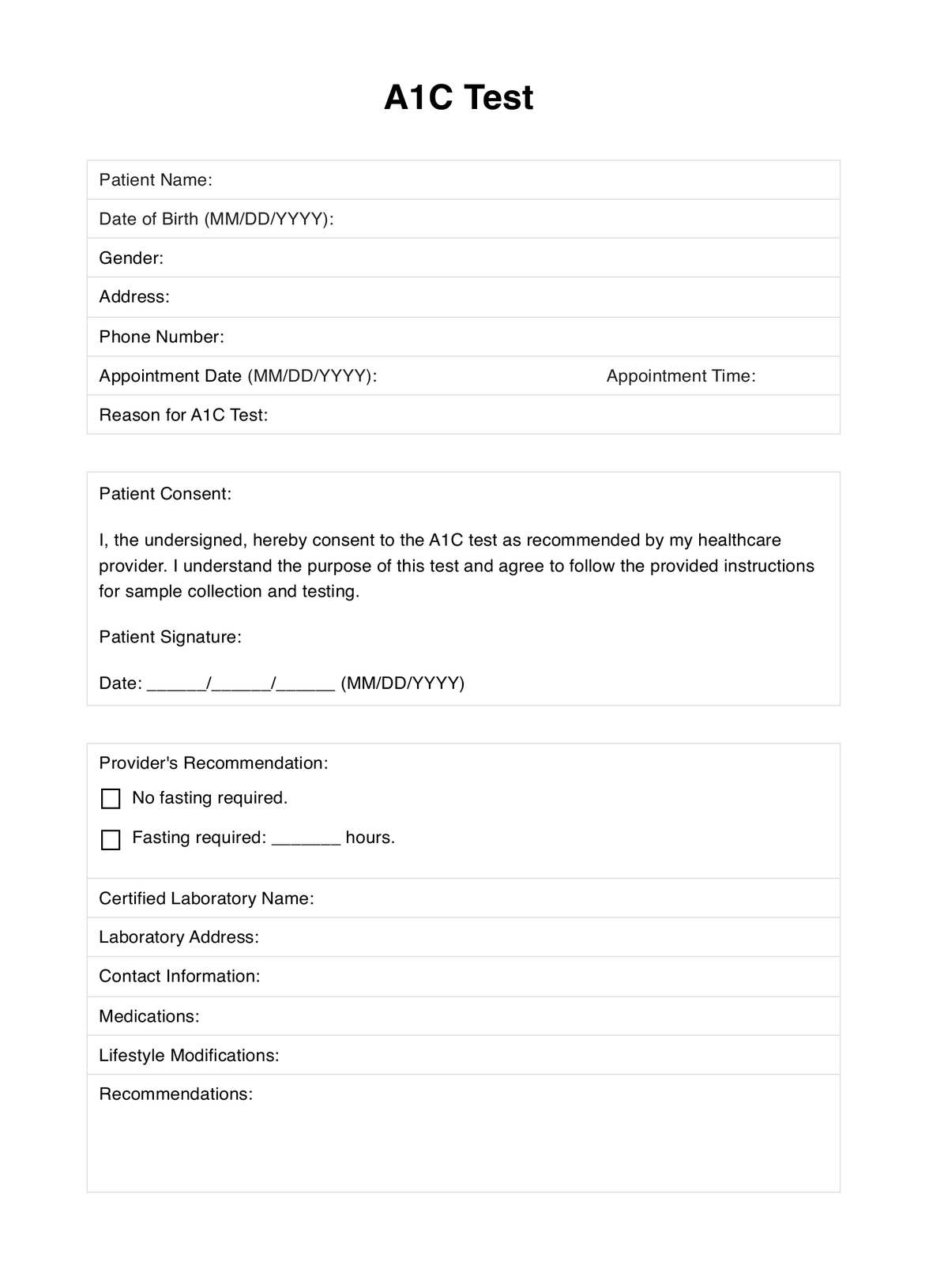Healthcare providers, particularly those treating individuals with diabetes, often request A1C tests to monitor blood sugar control.

A1C
Carepatron empowers healthcare practitioners with valuable insights through A1C tests for managing blood sugar levels. Access a free PDF example here.
Use Template
A1C Template
Commonly asked questions
A1C tests are used for diabetes management, prediabetes screening, and treatment adjustment.
?
A healthcare professional draws a blood sample for laboratory analysis to measure average blood sugar levels.
?
EHR and practice management software
Get started for free
*No credit card required
Free
$0/usd
Unlimited clients
Telehealth
1GB of storage
Client portal text
Automated billing and online payments











